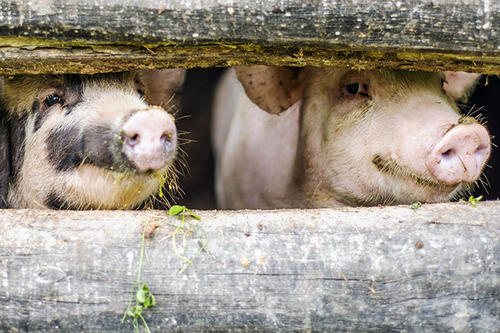
Porcine reproductive and respiratory syndrome virus (PRRSv) costs the swine industry more than $580 million each year, while foodborne illnesses on the whole cost the U.S. economy about $77 billion.
But some relief may be in sight. Researchers in the U of M’s College of Veterinary Medicine (CVM) Veterinary Diagnostic Lab (in collaboration with the College of Science and Engineering) are pursuing the use of cold plasma for decontaminating food and food-processing surfaces. The technology could have implications not only for PRRSv reduction, but also for the control of foodborne illness outbreaks.
Plasma is a cocktail of photons, ions, free radicals, molecules, and atoms—many highly reactive, which allows for many applications, including decontamination.
Plasma sources can be engineered to produce plasma at close to room temperature—often referred to as cold plasma—enabling the treatment of highly heat-sensitive surfaces, such as some foods.
“Food works as a vehicle to transfer viruses from a contaminated person to the consumers, especially foods that are not exposed to heat,” says Hamada Aboubakr, a postdoctoral associate working on the project.
“That’s why the team is looking for a technology using cold plasma—it can decontaminate berries or leafy greens without a need for cooking and boiling,” says Aboubakr.
So far, the team is seeing success in the lab.
Bacteria and viruses stand little chance against the cold plasma, says CVM researcher and professor Sagar Goyal. “If a surface is contaminated with viruses or bacteria, we can kill them.”
Resolving the swine industry’s biggest challenge would have a tremendous impact on the food industry and swine producers across the country.
“Swine farmers are already using air filtration systems to mitigate disease,” says Goyal. “But these are not foolproof, so if we can combine them with cold plasma, it would be helpful in getting rid of any disease affecting swine that can be transferred by air.”

-------
Read a more thorough version of this story at the College of Veterinary Medicine.
- Categories:
- Health




